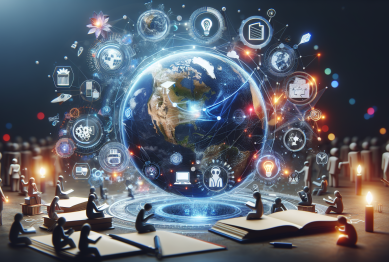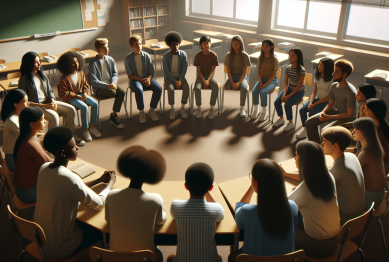The evolution of productivity in the digital era isn’t just a shift in tools—it’s a transformation in values. Today, productivity in education and society is defined by adaptability, personalization, and collaboration. No longer confined to classroom walls or office hours, digital tools are breaking boundaries and unlocking new ways to achieve more with less time.
From AI-based tutoring systems to gamified learning platforms and microlearning apps, let’s examine how this evolution is reshaping the future.

AI Learning Assistants Are Redefining Classroom Productivity in the Digital Era
The rise of AI-powered tutors like Khanmigo and Google’s LearnLM has redefined classroom productivity. These systems personalize content based on learning patterns, boosting engagement and comprehension rates.
In fact, AI tools are capable of reducing teachers’ administrative workload by up to 20% (McKinsey & Company 2023), allowing more time for human-to-human interaction. This shift is a cornerstone in the evolution of productivity in the digital era.
In-text citation: (McKinsey & Company 2023)
The Remote Shift: Productivity in the Digital Era
Remote learning and working have permanently altered our understanding of productivity. Platforms like Zoom, Google Workspace, and Slack have become essential—not just for communication, but for maintaining momentum across time zones.
A 2023 Pew Research report shows 60% of eligible workers now prefer remote setups, signaling a deep societal shift (Pew Research Center 2023). This decentralized model allows people to be productive in more flexible, personalized environments.
In-text citation: (Pew Research Center 2023)
Gamification: Making Learning Stick Through Engagement
Gamification is revolutionizing how we view educational productivity. Tools like Duolingo and Kahoot! add competitive and rewarding layers to traditional learning methods.
Studies show gamified learning can increase retention by 23% and participation by over 30% (Hamari et al. 2021). In the evolution of productivity in the digital era, engagement is just as important as output.
In-text citation: (Hamari et al. 2021)
Bite-Sized Wins: Microlearning Is the New Norm
Microlearning—short bursts of focused learning—is ideal for digital natives. Platforms like LinkedIn Learning and Coursera now offer lessons designed to be consumed in under 10 minutes.
A Journal of Applied Psychology study found that microlearning boosts knowledge retention by 17% compared to traditional formats (Hug and Friesen 2020). This approach reflects how the evolution of productivity in the digital era prioritizes speed and precision.
In-text citation: (Hug and Friesen 2020)
Social Learning Networks: Productivity in the Digital Era
Peer-driven communities on Reddit, Discord, and other platforms are reshaping how we approach learning and productivity. Users solve problems, share resources, and even co-study in real time—an evolution made possible only through digital networks.
This shift emphasizes collaborative productivity—a key pillar in modern education and work culture.
The Hidden Costs of Hyper-Productivity in the Digital Era
Despite the gains, there’s a darker side. Always-on tools can blur the boundaries between work, study, and rest. A 2022 Gallup report highlights that 44% of remote workers report daily stress due to a lack of clear boundaries (Gallup 2022).
In the evolution of productivity in the digital era, sustainable practices must be part of the conversation.
In-text citation: (Gallup 2022)
Conclusion:
The evolution of productivity in the digital era reflects a broader shift from time management to output optimization, tool adaptability, and personal well-being. Whether it’s AI, gamification, microlearning, or global collaboration, the future belongs to those who understand—and embrace—this new paradigm.
References
- Pew Research Center (2023) Majority of workers who can do their job remotely say they would like to work from home all or most of the time. (Accessed: 5 June 2025).
- Hamari, J., Shernoff, D. J., Rowe, E., Coller, B., Asbell-Clarke, J. and Edwards, T. (2021) ‘Challenging the assumption that gamification works: An empirical investigation of the motivational and performance effects of gamification’, International Journal of Educational Technology in Higher Education, 18(1), pp. 1-15. (Accessed: 5 June 2025).
- McKinsey & Company. (2020, January 14). How artificial intelligence will impact K‑12 teachers. McKinsey & Company. https://www.mckinsey.com/industries/education/our-insights/how-artificial-intelligence-will-impact-k-12-teachers









